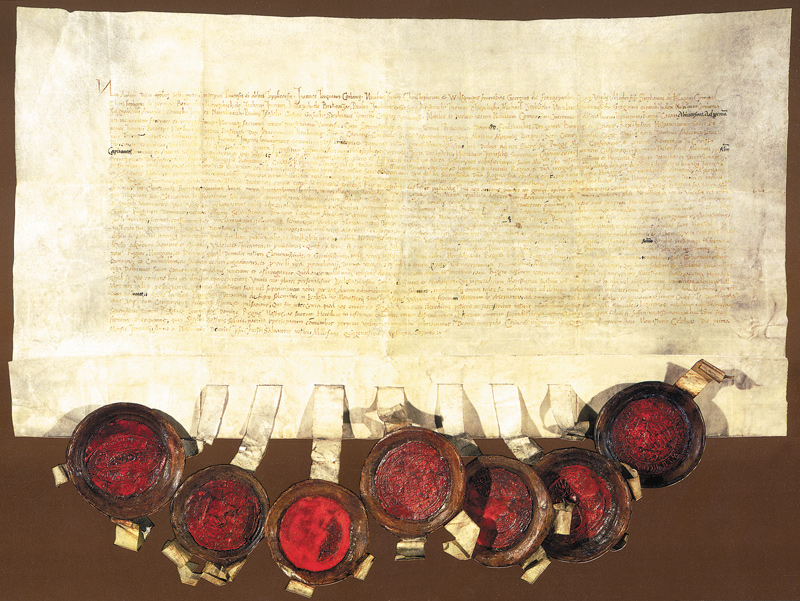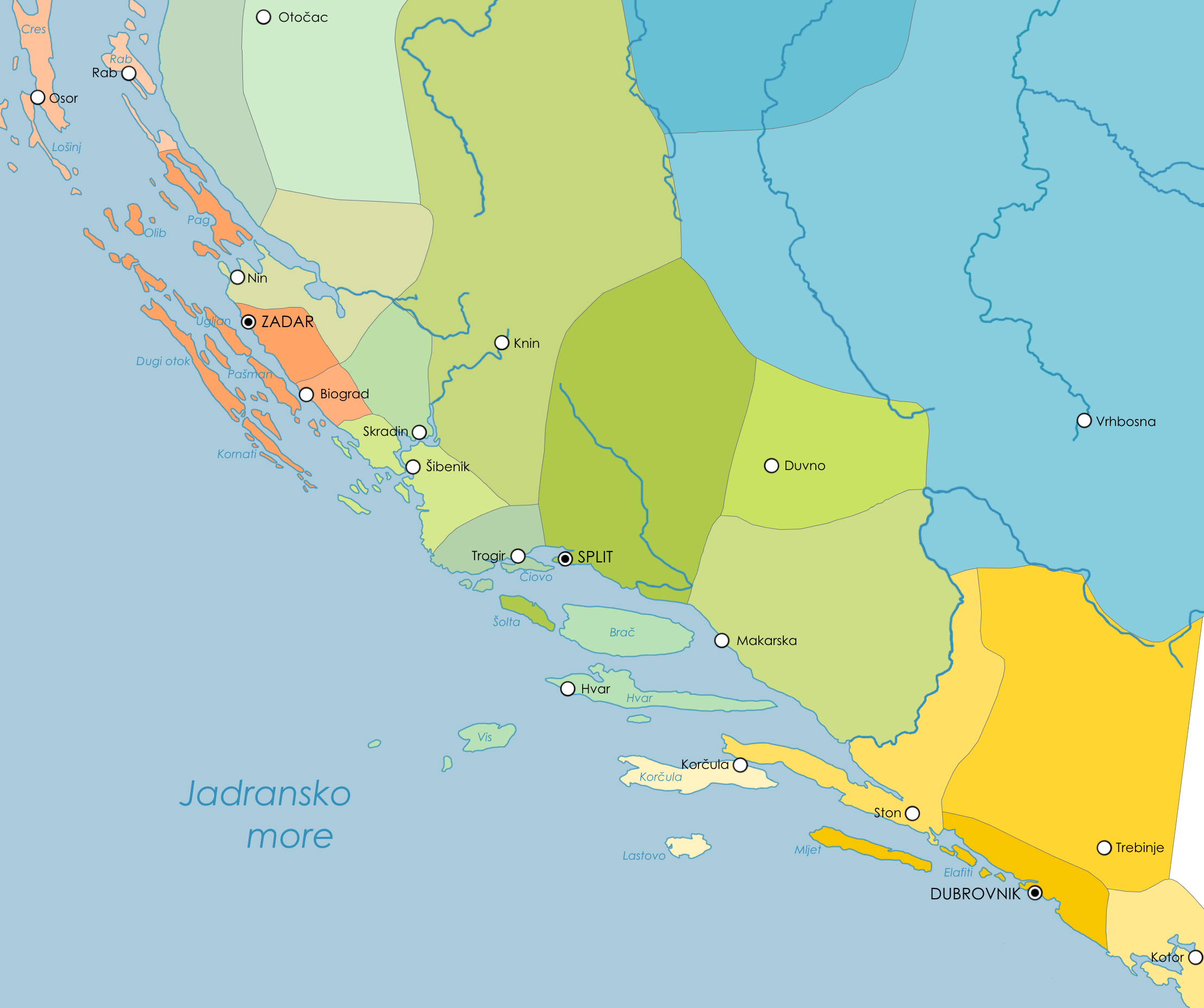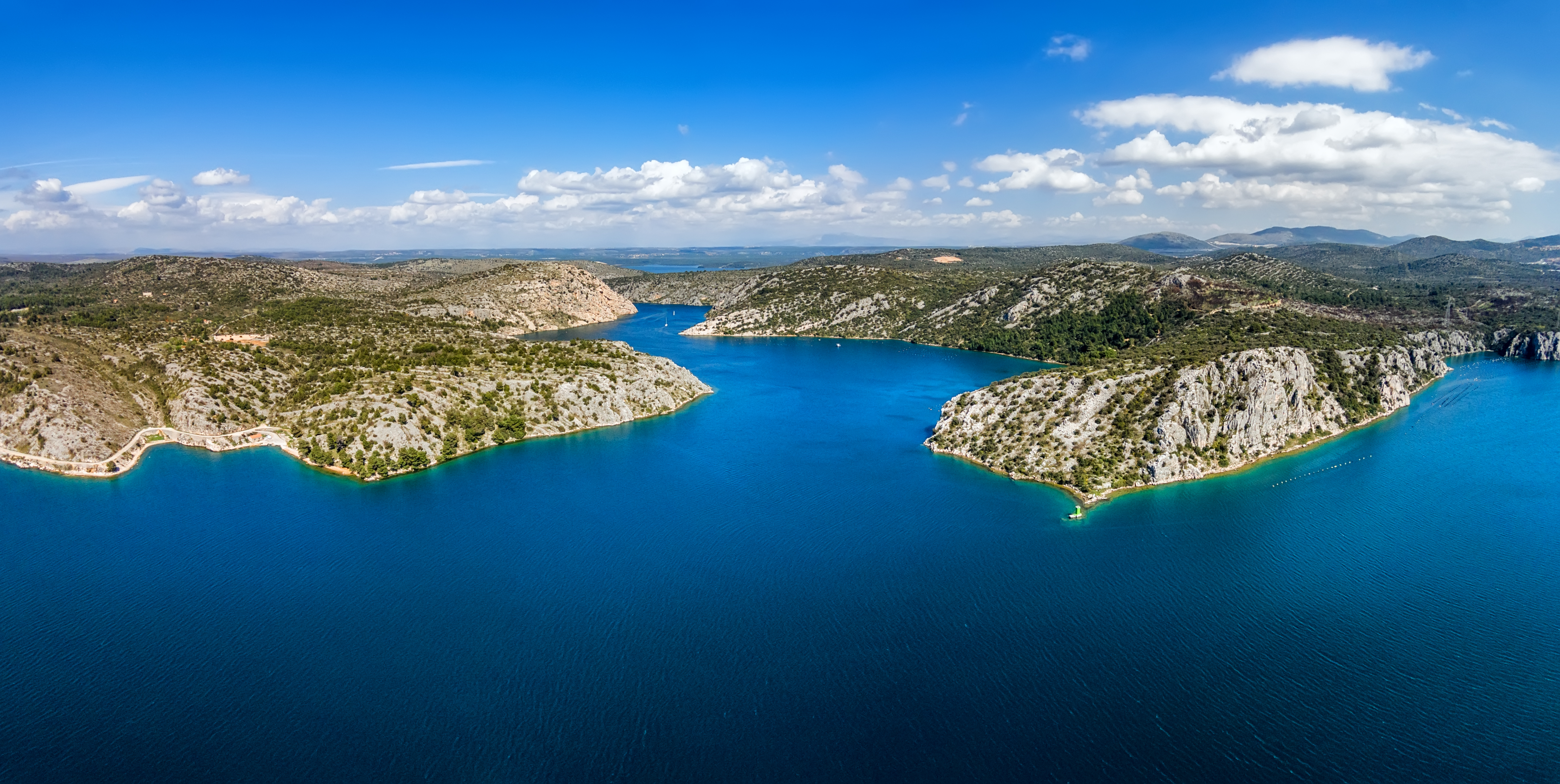|
Siege Of Knin
The siege of Knin ( hr, Opsada Knina) was a siege of the city of Knin, the capital of the Kingdom of Croatia, by the Ottoman Empire in 1522. After two failed attempts in 1513 and 1514, Ottoman forces led by Ghazi Husrev Bey, sanjak-bey (governor) of the Sanjak of Bosnia, launched a major offensive on southern Croatia in the spring of 1522. In May, his forces, reinforced with troops from the Sanjak of Herzegovina and Constantinople, besieged the Knin Fortress. Due to frequent raids of Knin and its surroundings, the fortress was already damaged and a large part of the local population fled to safer parts of Croatia. Croatian nobleman Mihajlo Vojković, the commander of Knin's garrison, only had a small force at his disposal. He surrendered the fortress on 28 May, in exchange for a free departure of his soldiers. The Ottomans entered the city on the following day. Croatian Ban Ivan Karlović, who was preparing a relief effort to help the besieged fortress, had Vojković imprison ... [...More Info...] [...Related Items...] OR: [Wikipedia] [Google] [Baidu] |
Ottoman Wars In Europe
A series of military conflicts between the Ottoman Empire and various European states took place from the Late Middle Ages up through the early 20th century. The earliest conflicts began during the Byzantine–Ottoman wars, waged in Anatolia in the late 13th century before entering Europe in the mid 14th century with the Bulgarian–Ottoman wars. In the mid 15th century, the Serbian–Ottoman wars and the Albanian–Turkish Wars (1432–1479), Albanian-Turkish wars were waged by Serbia and Albania respectively against the Ottoman Turks. Much of this period was characterized by Rumelia, Ottoman expansion into the Balkans. The Ottoman Empire made further inroads into Central Europe in the 15th and 16th centuries, culminating in the peak of Ottoman territorial claims in Europe. The Ottoman–Venetian wars spanned four centuries, starting in 1423 and lasting until 1718. This period witnessed the Siege of Negroponte (1470), fall of Negroponte in 1470, the Siege of Famagusta, fall of F ... [...More Info...] [...Related Items...] OR: [Wikipedia] [Google] [Baidu] |
Ivan Karlović
Ivan Karlović (c. 1485 – 9 August 1531), also known as by his Latin name ''Johannes Torquatus'', was the Count of Krbava, and Ban of Croatia from 1521 to 1524 and again from 1527 to 1531. In defense against Ottoman Empire expansion, he lost most of his personal holdings. He was the last male descendant of the Kurjaković family from the noble tribe of Gusić, and after his death the estates went to Nikola III Zrinski who married his sister Jelena Kurjaković. Karlović is positively remembered in the Croatian folk poetry. Early life Ivan was born c. 1485 in Udbina, as the son of Karlo Kurjaković, and Dorothea Frankopan. After his father's death in 1493, he inherited vast estates of the family, including županijas Krbava, Odorje, Hotuča, Lapac, part of Lika and several fortified cities in near županijas, as well the title of the Count of Krbava. During his lifetime, in a similar fashion to other Croatian and European noblemen, had an anachronistic tendency to trace his f ... [...More Info...] [...Related Items...] OR: [Wikipedia] [Google] [Baidu] |
Cazin
Cazin ( sr-cyrl, Цазин) is a city located in Una-Sana Canton of the Federation of Bosnia and Herzegovina, an entity of Bosnia and Herzegovina. It is situated in northwest Bosnia and Herzegovina in the Bosanska Krajina region, near the border with Croatia. As of 2013, it has a population of 66,149 inhabitants. The municipality is often also called Cazinska Krajina. The town of Cazin is located on the main road which connects Bihać and Velika Kladuša. History Cazin has several historic places, some dating back to the 14th century. Ostrožac castle and Radetina Tower are located in Cazin. Cazin was the city of Knin Bishop. From 1929 to 1941, Cazin was part of the Vrbas Banovina of the Kingdom of Yugoslavia. The Cazin uprising of 1950, an armed anti-state rebellion of peasants, occurred in Cazin and neighboring Velika Kladuša and Slunj, which were all part of Communist Yugoslavia at the time. The peasants revolted against the forced collectivization and collective farms by ... [...More Info...] [...Related Items...] OR: [Wikipedia] [Google] [Baidu] |
Roman Catholic Diocese Of Knin
The Diocese of Knin ( la, Tininum, also ''Tinum'') was founded in 1050 and is today a titular see of the Latin Church of the Catholic Church. Its ''cathedra'' was located in Knin,''Annuario Pontificio 2013'' (Libreria Editrice Vaticana 2013 ), p. 991 Croatia. History The history of the diocese of Knin can be traced from the mid-11th century when a court bishop was established by the Kings of Croatia under the title "Bishop of the Croats" (''episcopus Chroatorum''). Its see was originally located in the Romanesque church of Saint Mary in the royal village of Biskupija near Knin. Following the 1185 ecclesial council in Split, the bishop was transferred to Knin, and renamed "Bishop of Knin". The construction of a new cathedral was initiated in 1203, on the basis of a previous 10th-century royal monastery in Kapitul, and was consecrated during the tenure of Bishop Nicholas (1270-1272). A history of the successive bishops, from Mark in 1050 to Joseph in 1755, is given in Daniele Far ... [...More Info...] [...Related Items...] OR: [Wikipedia] [Google] [Baidu] |
Battle Of Krbava Field
The Battle of Krbava Field ( hr, Bitka na Krbavskom polju, Krbavska bitka; hu, Korbávmezei csata; tr, Krbava Muharebesi) was fought between the Ottoman Empire of Bayezid II and an army of the Kingdom of Croatia, at the time in personal union with the Kingdom of Hungary, on 9 September 1493, in the Krbava field, a part of the Lika region in Croatia. The Ottoman forces were under the command of Hadım Yakup Pasha, sanjak-bey of the Sanjak of Bosnia, and the Croatian army was led by Emerik Derenčin, ban of Croatia, who served under King Vladislaus II Jagiello. Earlier in the summer of 1493, the Ottomans undertook a raid through Croatia into Carniola and Styria. Around the same time, clashes had been raging in Croatia between the House of Frankopan and the Croatian ban, but news of the Ottoman incursion forced them to make peace. The Croatian nobles assembled a large army and intercepted the Ottoman forces that were returning to the Sanjak of Bosnia. Poor tactics, and the choi ... [...More Info...] [...Related Items...] OR: [Wikipedia] [Google] [Baidu] |
Krka (Croatia)
Krka () is a river in Croatia's Dalmatia region, known for its numerous waterfalls. It is long and its basin covers an area of . It was known in ancient Greek language, ancient Greek as ''Kyrikos'', or may be also as ''Catarbates'' (literally "steeply falling") by the Ancient Greece, ancient Greeks, it was known to the Ancient Rome, ancient Romans as ''Titius'', ''Corcoras'', or ''Korkoras''. Course The river has its source near the border of Croatia with Bosnia and Herzegovina, at the foot of the Dinara mountain. After meandering through the Krčić canyon, it enters the Polje, karst valley of Knin through the Krčić waterfall of . At the foot of the second, called the Topoljski waterfall, of these is a spring in a cave with of passage. The river then flows through the valley, where it is fed by the Kosovčica on the left and the Orašnica and the Butižnica on the right, passing the Knin Fortress, Fortress of Knin between the last two on the way, and into the main canyon. ... [...More Info...] [...Related Items...] OR: [Wikipedia] [Google] [Baidu] |
Dalmatia
Dalmatia (; hr, Dalmacija ; it, Dalmazia; see #Name, names in other languages) is one of the four historical region, historical regions of Croatia, alongside Croatia proper, Slavonia, and Istria. Dalmatia is a narrow belt of the east shore of the Adriatic Sea, stretching from the island of Rab in the north to the Bay of Kotor in the south. The Dalmatian Hinterland ranges in width from fifty kilometres in the north, to just a few kilometres in the south; it is mostly covered by the rugged Dinaric Alps. List of islands of Croatia, Seventy-nine islands (and about 500 islets) run parallel to the coast, the largest (in Dalmatia) being Brač, Pag (island), Pag, and Hvar. The largest city is Split, Croatia, Split, followed by Zadar and Šibenik. The name of the region stems from an Illyrians, Illyrian tribe called the Dalmatae, who lived in the area in classical antiquity. Later it became a Dalmatia (Roman province), Roman province, and as result a Romance languages, Romance culture ... [...More Info...] [...Related Items...] OR: [Wikipedia] [Google] [Baidu] |
Klis
Klis ( hr, Klis, it, Clissa, tr, Kilis) is a Croatian municipality located around a mountain fortress bearing the same name. It is located in the region of Dalmatia, located just northeast of Solin, Croatia, Solin and Split, Croatia, Split near the eponymous mountain pass. It has a population of 3,001, totalling 4,801 together with the eight other villages in its municipality (2011 census). The Klis mountain pass separates the mountains Mosor and Mali Kozjak, Kozjak at an altitude of 360m. It has had a major strategic value throughout history because any inland force passing through Klis would have been able to easily reach the entire region of Split (city), Split and Kaštela. During the Ottoman wars in Europe an already existing Roman fortress on a nearby hill was expanded into Klis Fortress. It was the centre of Sanjak of Klis, a sanjak within the Eyalet of Bosnia, Province of Bosnia during Ottoman rule. Klis was also ruled by the Kingdom of Bosnia, the Venetian Republic, and ... [...More Info...] [...Related Items...] OR: [Wikipedia] [Google] [Baidu] |
Skradin
Skradin ( it, Scardona; grc, Σκάρδων) is a small town in the Šibenik-Knin County of Croatia, with a population of 3,825 (2011 census). It is located near the Krka river and at the entrance to the Krka National Park, from Šibenik and from Split. The main attraction of the park, Slapovi Krke, is a series of waterfalls, the biggest of which, Skradinski buk, was named after Skradin. History It was a Liburnian city, named Scardon ( grc, Σκάρδων). Later it became a Roman town (Scardona in Latin), as the administrative and military centre of the region. It was destroyed during the Migration Period, and had by the 9th century been settled by Slavs. During the 10th century, it was one of the fortified towns in Croatia, as the centre of the Skradin županija. Skradin under Šubić rule In the late 13th and early 14th centuries, Skradin flourished as the capital of the Šubić bans, Paul I and Mladen II. The Šubić's built the Turina fortress on the hill overlooki ... [...More Info...] [...Related Items...] OR: [Wikipedia] [Google] [Baidu] |
Ban Of Croatia
Ban of Croatia ( hr, Hrvatski ban) was the title of local rulers or office holders and after 1102, viceroys of Croatia. From the earliest periods of the Croatian state, some provinces were ruled by bans as a ruler's representative (viceroy) and supreme military commander. In the 18th century, Croatian bans eventually became the chief government officials in Croatia. They were at the head of the Ban's Government, effectively the first prime ministers of Croatia. The institution of ban persisted until the first half of the 20th century, when it was officially superseded in function by that of a parliamentary prime minister. Origin of title South Slavic ''ban'' (, with a long ), is directly attested in 10th-century Constantine Porphyrogenitus' book '' De Administrando Imperio'' as ', in a chapter dedicated to Croats and the organisation of their state, describing how their ban "has under his rule Krbava, Lika and Gacka." Bans during the Trpimirović dynasty References from ... [...More Info...] [...Related Items...] OR: [Wikipedia] [Google] [Baidu] |
Matthias Corvinus
Matthias Corvinus, also called Matthias I ( hu, Hunyadi Mátyás, ro, Matia/Matei Corvin, hr, Matija/Matijaš Korvin, sk, Matej Korvín, cz, Matyáš Korvín; ), was King of Hungary and Croatia from 1458 to 1490. After conducting several military campaigns, he was elected King of Bohemia in 1469 and adopted the title Duke of Austria in 1487. He was the son of John Hunyadi, Regent of Hungary, who died in 1456. In 1457, Matthias was imprisoned along with his older brother, Ladislaus Hunyadi, on the orders of King Ladislaus the Posthumous. Ladislaus Hunyadi was executed, causing a rebellion that forced King Ladislaus to flee Hungary. After the King died unexpectedly, Matthias's uncle Michael Szilágyi persuaded the Estates to unanimously proclaim the 14-year-old Matthias as king on 24 January 1458. He began his rule under his uncle's guardianship, but he took effective control of government within two weeks. As king, Matthias waged wars against the Czech mercenaries who domina ... [...More Info...] [...Related Items...] OR: [Wikipedia] [Google] [Baidu] |
Kingdom Of Hungary
The Kingdom of Hungary was a monarchy in Central Europe that existed for nearly a millennium, from the Middle Ages into the 20th century. The Principality of Hungary emerged as a Christian kingdom upon the coronation of the first king Stephen I at Esztergom around the year 1000;Kristó Gyula – Barta János – Gergely Jenő: Magyarország története előidőktől 2000-ig (History of Hungary from the prehistory to 2000), Pannonica Kiadó, Budapest, 2002, , p. 687, pp. 37, pp. 113 ("Magyarország a 12. század második felére jelentős európai tényezővé, középhatalommá vált."/"By the 12th century Hungary became an important European factor, became a middle power.", "A Nyugat részévé vált Magyarország.../Hungary became part of the West"), pp. 616–644 his family (the Árpád dynasty) led the monarchy for 300 years. By the 12th century, the kingdom became a European middle power within the Western world. Due to the Ottoman occupation of the central and south ... [...More Info...] [...Related Items...] OR: [Wikipedia] [Google] [Baidu] |


.jpg)


